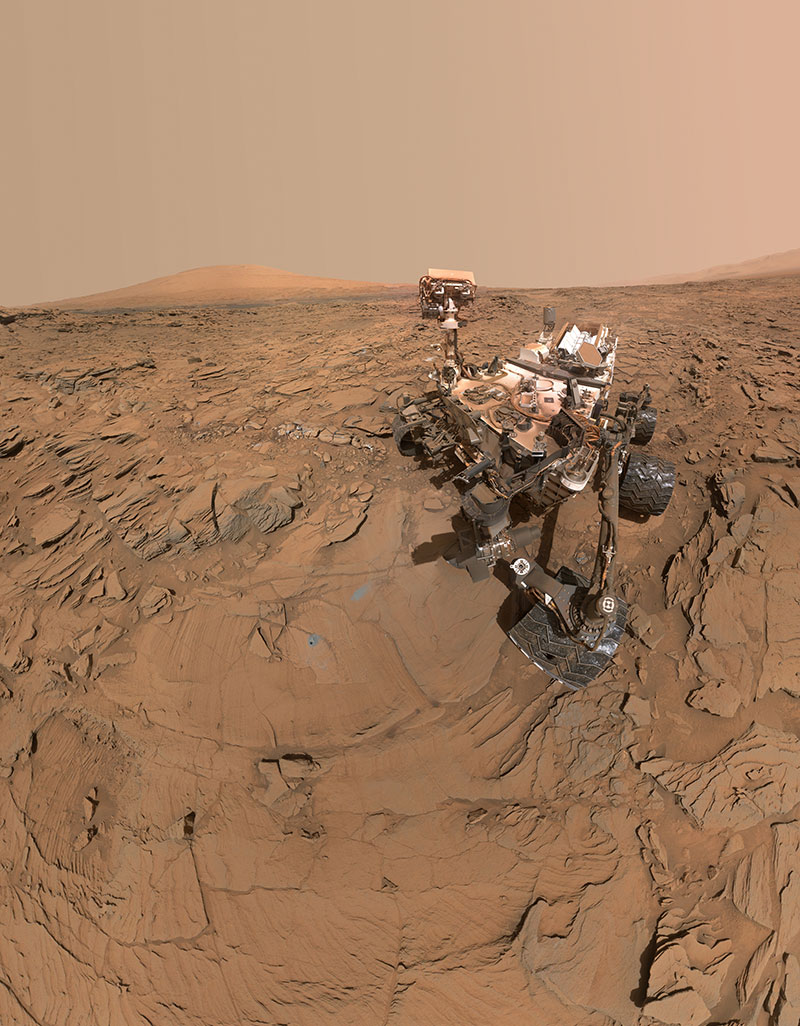

Mars Data
- Average distance from the Sun: 1.52 x Earth distance
- Orbital period: 1.88 years
- Diameter: 0.53 x Earth diameter
- Mass: 0.11 x Earth mass
- Rotation period: 24.6 hours
- Average density: 3.93 g/cm3
- Composition: rocky (including both rock and metal)
- Average surface temperature: –55°C
- Moons: 2 (very small)
A few more steps take us to the model Mars, which is about half the size (diameter) of Earth. Mars has two tiny moons, Phobos and Deimos, but they are so small as to be microscopic on our 1-to-10-billion scale.
Mars is a world of wonders, with extinct volcanoes that dwarf the largest mountains on Earth, a great canyon that runs nearly one-fifth of the way around the planet, and polar caps made of frozen carbon dioxide (“dry ice”) and water ice. Although Mars is frozen today, the presence of dried-up lakes and rivers offers clear evidence that Mars was warm and wet sometime in the distant past. Thus, Mars may once have been hospitable for life, though its wet era probably ended at least 3 billion years ago.
Mars looks almost Earth-like in photographs taken by spacecraft on its surface, but you wouldn’t want to visit without a space suit. The air pressure is far less than that on top of Mount Everest, the temperature is usually well below freezing, the trace amounts of oxygen would not be nearly enough to breathe, and the lack of atmospheric ozone would leave you exposed to deadly ultraviolet radiation from the Sun.
Mars is the most studied planet besides Earth. Many nations have sent robotic spacecraft to orbit or land on Mars, and plans are in the works for sending humans to Mars in the not-too-distant future. Overturning rocks in ancient riverbeds or chipping away at ice in the polar caps, explorers will search for fossil evidence of past life–and perhaps even find a few places where microbes survive today.
